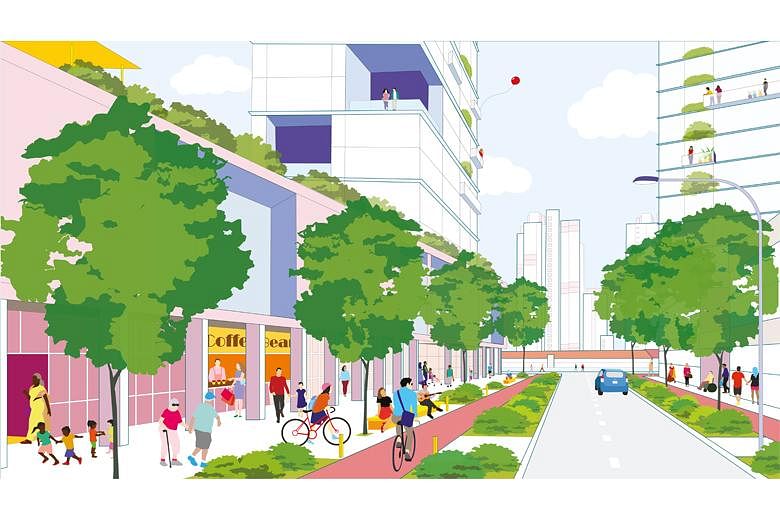SINGAPORE - More homes will be built in the Central Business District to make sure it does not become a ghost town at night.
To that end, the Government will give developers a higher gross plot ratio - the permissible development intensity of a land parcel - to encourage them to convert ageing offices into hotels and homes.
Announcing the CBD Incentive Scheme at the launch of the Draft Master Plan on Wednesday (March 27), Minister for National Development Lawrence Wong noted that the district is largely mono-use today.
"We want to introduce a broader mix of uses so that the CBD is not only a place to work, but also a vibrant place to live and play," he said.
The scheme, which will kick in when the Master Plan is gazetted later this year, will apply to the Anson Road, Cecil Street, Shenton Way, Robinson Road and Tanjong Pagar areas.
Predominantly office buildings - which have been built or have had their last major refurbishment at least 20 years ago - are eligible.
They will get a plot ratio increase of between 25 to 30 per cent, depending on where they are located and their land use, which could range from a hotel to a condominium with some shops on the ground floor.
By doing this, the authorities hope to inject new life into this major business node, and see streets filled with hip restaurants, bars and boutique gyms, like the vibrant street life that has emerged in fringe CBD areas such as Boat Quay, Circular Road and Telok Ayer .
Some 2,000 private homes are being planned for Marina South, with others to come up in the Downtown and Rochor areas.
"The injection of new housing options in Downtown will bring more homes to where jobs are, and cut down on commuting times for workers to and from work," said the Urban Redevelopment Authority (URA).
"With a larger live-in population, Downtown is set to become abuzz with activities and life after work hours, adding to the attractiveness and vibrancy of the city."
The CBD Incentive Scheme, and the Strategic Development Incentive Scheme to rejuvenate ageing commercial buildings islandwide, will replace the Bonus Plot Ratio Scheme introduced in 1989.
These schemes are one thrust under the draft Master Plan, which is the statutory land use plan that guides Singapore's development in the medium term over the next 10 to 15 years. It is reviewed every five years.
Besides plans for the oldest business hub here, new homes - both public and private - will also be added in other mature towns.
For example, public housing at Dakota Crescent will be planned around six preserved Singapore Improvement Trust blocks and an iconic playground from the 1950s.
There will also be new housing at Farrer Park to give those who want to live near the city more choices.
Future homeowners there can bond over sporting and recreational activities, as the area's sporting heritage takes focus. Familiar landmarks like the Farrer Park Swimming Pool and a former boxing gym, for example, will be kept.
And those aspiring to have homes with sea views may get a chance in Bayshore district in East Coast.
According to tender documents in 2017, the URA is studying the possibility of adding 6,000 public units and 6,500 private residential units.
Details like the number of flats, where they will be sited and when they would go on the market will come later.




